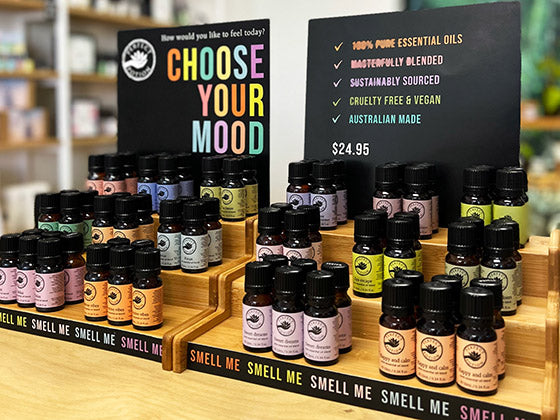To honour World Wildlife Day, we sat down with Elise Hilder, Wildlife Rescuer, to talk about what’s involved in being a Wildlife Rescuer in our community, as well as what we can do to help wildlife in our daily lives.
Perfect Potion [PP]: What is a Wildlife Rescuer?
Elise Hilder [EH]: Wildlife Rescuers in Queensland hold a rescue/rehabilitation permit under the Department of Environment and Heritage Protection to undertake rescues and provide 24-hour emergency care for native animals that are injured, suffering from illness, trapped, or orphaned. Some of the animals I have worked with include kangaroo and wallaby joeys, lizards, birds, and possums. It is all about getting animals out of harm’s way, seeking veterinary treatment, and either releasing or sending the animals into longer-term care. Sometimes rescues are quick and sometimes they take hours depending on the complexity of the situation. Whatever the job, it generally includes a thorough vet assessment by a wildlife veterinarian, followed by treatment (if required), and then transport to a wildlife carer for rehabilitation. The eventual goal is always to release the animal back into the wild. Sometimes I also do vet pickups and transport animals between carers and wildlife hospitals.
PP: Why did you become a Wildlife Rescuer?
EH: As a child, I was always looking after injured native birds and loved to learn all their beautiful birdsongs. After three back-to-back confronting experiences involving baby birds who were fatally injured I realised I could become a registered Wildlife Rescuer and train to help these animals on a regular basis with the support of other carers and rescuers. I’m really passionate about kangaroo and bird conservation in particular, and I attend regular training for rescue, first aid, and species-specific care as part of my permit.
PP: What have you been rescuing recently?
EH: I recently picked up an orphaned 60g ringtail possum—she was tiny, furless, dehydrated, and hungry. She was transported straight to a specialised possum carer and is growing stronger each day. I also rescued a juvenile magpie entangled in a tree. In partnership with another animal rescue unit and Queensland Fire and Emergency Services, the magpie was eventually cut free—it’s a collaborative effort at times! The magpie’s leg was caught in insulation material from a neighbouring residential development site. It was trapped 8 meters high and couldn’t get free on its own.
PP: Where do you go to rescue animals?
EH: Anywhere—it all depends. It’s usually word of mouth—people call me because they know I will go. My motto is, “no animal gets left behind.” Gympie is probably the furthest north I’ve driven, but I’ve also driven south to the Scenic Rim, west to the Darling Downs, and south west to Stanthorpe.
PP: What’s the best thing about being a Wildlife Rescuer?
EH: It opens up your eyes to the environment around you. You learn to listen, watch, and interpret the world from an animal’s perspective and read their behaviour for clues about what has happened. It is also profoundly fulfilling to help something that might otherwise die a slow, terrible death. Every animal deserves the right to thrive.
PP: What’s the most difficult thing about being a Wildlife Rescuer?
EH: When you know you can’t save something or when you fight to save something and it seems to be doing well, but then it doesn’t survive. That’s hard. It is also hard to watch our very own human lifestyles threatening native habitat and local populations of vulnerable creatures. Everything we do impacts their homes. I believe education is the most important tool in reaching people and I take every opportunity to have conversations with people on rescues about the issues facing our native wildlife.
PP: What are the top 3 things we can do to help wildlife in our everyday lives?
- Awareness, education, reach out, support or volunteer!
- The big D’s—development, driving, disease, and unsupervised domestic pets. These are the biggest threats facing our native wildlife today. If you’re in an area that says there is wildlife and you’re driving, please slow down—particularly early in the morning and late afternoon/dusk when many animals are most active and on the go. Also, if possible, supervise your pets while they are outdoors. Cat and dog bites are unfortunately not uncommon for wildlife. Lastly, many species (particularly birds) develop debilitating diseases from incorrect diets given to them by their human friends. Food that tastes good to us is not necessarily suitable for native wildlife and can have catastrophic effects on their development and growth.
- You’re more capable than you think! Keep a pillowcase (made out of a breathable, cotton fabric) in the back of your car in case you come across injured, ill or orphaned wildlife so you can take it to a nearby vet. If you do not feel confident doing this, call a wildlife rescue group in your area or one of the three wildlife hospital hotlines in South East Queensland for assistance. If you find injured wildlife in your home, and it is safe to do so, you can contain them by placing a laundry basket over them and call a wildlife rescue group to come and collect them.






